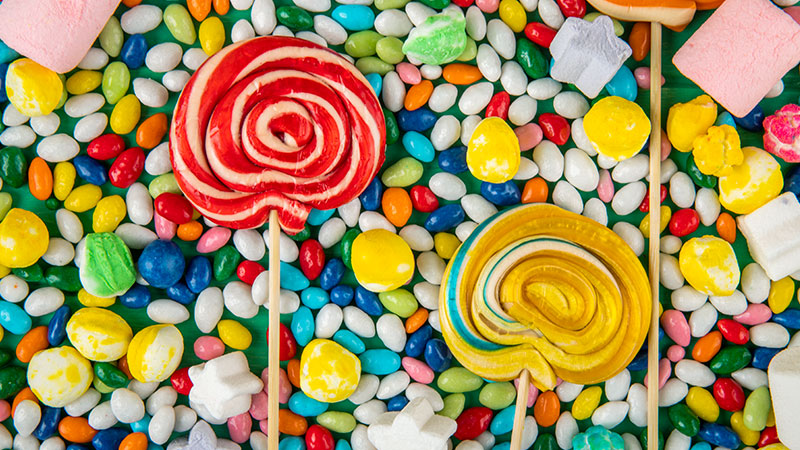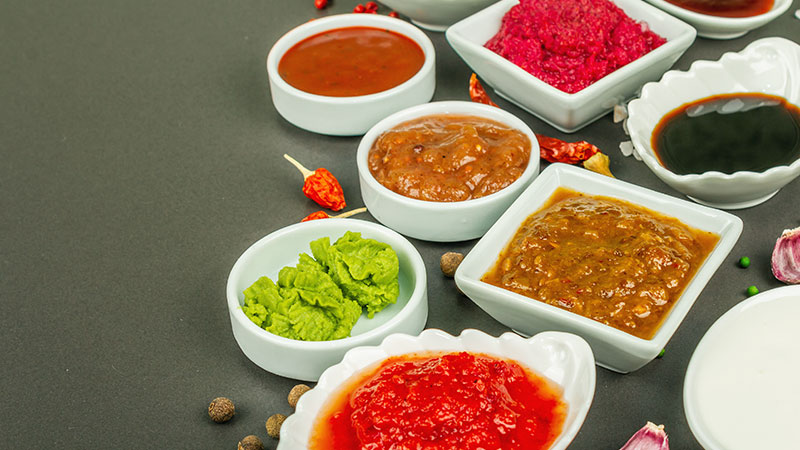How important is meal timing for managing diabetes? The answer is crucial: meal timing plays a significant role in controlling blood sugar levels for individuals with diabetes.
Properly timed meals help stabilize blood glucose, enhance insulin sensitivity, and prevent spikes and drops in blood sugar levels.
Consistent meal schedules allow the body to utilize insulin more efficiently, which is particularly important for those managing Type 1 or Type 2 diabetes.
Eating at regular intervals can also aid in weight management, which is a key factor in diabetes control.
By understanding and implementing strategic meal timing, individuals with diabetes can improve their overall blood sugar management, reduce the risk of complications, and enhance their quality of life.

15 Best Foods For Diabetes
Maintaining a healthy diet is essential for managing diabetes effectively. Certain foods can help stabilize blood sugar levels, improve insulin sensitivity, and reduce the risk of complications.
In this comprehensive guide, we’ll explore 15 of the best foods for diabetes, along with their benefits and ways to incorporate them into your diet.
1. Leafy Greens

Leafy greens such as spinach, kale, and Swiss chard are rich in vitamins, minerals, and antioxidants. They are low in calories and carbohydrates, making them ideal for diabetes management.
Leafy greens also contain fiber, which slows down the digestion of carbohydrates and helps stabilize blood sugar levels.
How to Enjoy: Add leafy greens to salads, soups, smoothies, or stir-fries for a nutritious boost.
2. Berries

Berries like strawberries, blueberries, and raspberries are packed with antioxidants, vitamins, and fiber. They have a low glycemic index, meaning they won’t cause rapid spikes in blood sugar levels.
Berries also contain polyphenols, which have anti-inflammatory properties and may help improve insulin sensitivity.
How to Enjoy: Enjoy berries as a snack, add them to yogurt, oatmeal, or salads, or blend them into smoothies.
3. Fatty Fish

Fatty fish such as salmon, mackerel, and sardines are excellent sources of omega-3 fatty acids, which have been shown to reduce inflammation and improve heart health.
Eating fatty fish regularly may also lower the risk of developing type 2 diabetes and help manage blood sugar levels in those with diabetes.
How to Enjoy: Grill, bake, or steam fatty fish and serve with vegetables and whole grains for a nutritious meal.
4. Whole Grains

Whole grains like oats, quinoa, and brown rice are rich in fiber, vitamins, and minerals.
They have a lower glycemic index compared to refined grains, meaning they cause a slower and steadier increase in blood sugar levels. Consuming whole grains can also help reduce the risk of heart disease, a common complication of diabetes.
How to Enjoy: Use whole grains as a base for meals, such as in salads, stir-fries, or as a side dish.
5. Nuts

Nuts such as almonds, walnuts, and pistachios are nutrient-dense snacks that provide healthy fats, protein, and fiber.
They have been shown to improve blood sugar control, reduce inflammation, and lower the risk of heart disease. However, portion control is key, as nuts are calorie-dense.
How to Enjoy: Enjoy a small handful of nuts as a snack, add them to salads or yogurt, or use nut butter as a spread.
6. Beans and Legumes

Beans and legumes like lentils, chickpeas, and black beans are high in fiber, protein, and complex carbohydrates. They have a low glycemic index and can help improve blood sugar control, reduce insulin resistance, and lower the risk of heart disease.
How to Enjoy: Use beans and legumes in soups, stews, salads, or as a meat substitute in dishes like tacos or burgers.
7. Greek Yogurt

Greek yogurt is rich in protein, which helps keep you full and may improve blood sugar control. It also contains probiotics, which promote gut health, and calcium, which is important for bone health. Opt for plain, unsweetened Greek yogurt to avoid added sugars.
How to Enjoy: Enjoy Greek yogurt as a snack, add it to smoothies, or use it as a substitute for sour cream in recipes.
8. Avocado

Avocado is a nutrient-dense fruit that is rich in healthy fats, fiber, vitamins, and minerals. It has a low glycemic index and may help improve insulin sensitivity, reduce inflammation, and lower cholesterol levels.
Incorporating avocado into your diet can help promote overall health and well-being.
How to Enjoy: Add avocado slices to salads, sandwiches, or omelets, or enjoy mashed avocado on whole-grain toast.
9. Cinnamon

Cinnamon is a flavorful spice that may help improve insulin sensitivity and lower blood sugar levels.
It contains compounds that mimic the effects of insulin and may help transport glucose into cells more effectively. Sprinkling cinnamon on foods can add flavor without adding calories or carbohydrates.
How to Enjoy: Sprinkle cinnamon on oatmeal, yogurt, or smoothies, or use it to flavor baked goods like muffins or pancakes.
10. Garlic

Garlic is a versatile ingredient that adds flavor to a wide variety of dishes. It contains compounds that may help improve blood sugar control, reduce inflammation, and lower cholesterol levels.
Incorporating garlic into your diet may help support overall health and reduce the risk of complications associated with diabetes.
How to Enjoy: Add minced garlic to stir-fries, soups, sauces, or roasted vegetables for added flavor.
11. Turmeric

Turmeric is a spice known for its vibrant color and potent anti-inflammatory properties. It contains curcumin, a compound that may help improve insulin sensitivity, reduce inflammation, and lower blood sugar levels.
Adding turmeric to your diet may offer numerous health benefits, including improved diabetes management.
How to Enjoy: Add turmeric to curries, soups, smoothies, or homemade salad dressings for a flavorful boost.
12. Eggs

Eggs are a nutritious and versatile food that can be enjoyed in various ways. They are high in protein and low in carbohydrates, making them an excellent choice for individuals with diabetes.
Eggs also contain important nutrients like vitamin D, which may help improve insulin sensitivity.
How to Enjoy: Enjoy eggs boiled, scrambled, poached, or baked, or use them to make omelets or frittatas loaded with vegetables.
13. Chia Seeds

Chia seeds are tiny seeds that are packed with nutrients like fiber, protein, and omega-3 fatty acids. They have a low glycemic index and can help stabilize blood sugar levels, reduce hunger, and promote weight loss.
Chia seeds also absorb liquid and form a gel-like consistency, which can help slow down the digestion of carbohydrates.
How to Enjoy: Sprinkle chia seeds on yogurt, oatmeal, or salads, or use them to make chia pudding or homemade energy bars.
14. Vinegar

Vinegar, particularly apple cider vinegar, has been shown to have several health benefits, including improved blood sugar control. It may help lower post-meal blood sugar levels by slowing down the digestion of carbohydrates and increasing insulin sensitivity.
Incorporating vinegar into your diet may help improve diabetes management.
How to Enjoy: Use vinegar to make salad dressings, marinades, or sauces, or dilute it in water and drink it before meals.
15. Sweet Potatoes

Sweet potatoes are a nutritious and delicious root vegetable that is rich in fiber, vitamins, and minerals.
They have a lower glycemic index compared to white potatoes, meaning they cause a slower and steadier increase in blood sugar levels.
Sweet potatoes also contain antioxidants that may help reduce inflammation and improve insulin sensitivity.
How to Enjoy: Bake, roast, or steam sweet potatoes and serve them as a side dish or as a base for bowls or salads.
Incorporating these 15 best foods for diabetes into your diet can help improve blood sugar control, reduce inflammation, and lower the risk of complications associated with diabetes.
15 Worst Foods For Diabetes
Maintaining a healthy diet is essential for managing diabetes effectively. While certain foods can help stabilize blood sugar levels and promote overall health, others can have the opposite effect, causing spikes in blood sugar and increasing the risk of complications.
In this comprehensive guide, we’ll explore 15 of the worst foods for diabetes, along with their negative impacts and alternatives to consider.
1. Sugary Beverages

Sugary beverages like soda, fruit juice, and sweetened tea can cause rapid spikes in blood sugar levels due to their high sugar content.
They provide empty calories and little to no nutritional value, contributing to weight gain, insulin resistance, and an increased risk of heart disease.
Alternative: Opt for water, unsweetened tea or coffee, or flavored water with no added sugars.
2. Processed Meats

Processed meats such as bacon, sausage, and deli meats are high in saturated fats, sodium, and preservatives. They can increase inflammation, raise cholesterol levels, and contribute to insulin resistance.
Consuming processed meats regularly has been linked to a higher risk of developing type 2 diabetes and cardiovascular disease.
Alternative: Choose lean protein sources like skinless poultry, fish, tofu, or legumes.
3. White Bread and Pasta

White bread, pasta, and other refined grains are stripped of their fiber and nutrients during processing, leading to a rapid spike in blood sugar levels.
They have a high glycemic index, meaning they cause a sharp increase in blood sugar followed by a quick drop, leaving you feeling hungry and craving more carbs.
Alternative: Opt for whole grain or whole wheat bread, pasta, or brown rice for a slower release of glucose and sustained energy.
4. Sugary Snacks and Desserts

Sugary snacks and desserts like cookies, cakes, and pastries are loaded with refined sugars, unhealthy fats, and empty calories. They can cause a rapid increase in blood sugar levels and contribute to weight gain, insulin resistance, and inflammation.
Alternative: Choose healthier dessert options like fresh fruit, yogurt with berries, or a small piece of dark chocolate.
5. French Fries and Potato Chips

French fries and potato chips are high in unhealthy fats, sodium, and refined carbohydrates. They have a high glycemic index and can cause a rapid spike in blood sugar levels.
Consuming fried foods regularly is associated with an increased risk of obesity, insulin resistance, and heart disease.
Alternative: Bake or roast potatoes or sweet potatoes with a small amount of olive oil and herbs for a healthier option.
6. Sugary Breakfast Cereals

Many breakfast cereals marketed as healthy options are actually loaded with added sugars and refined grains. They can cause a rapid increase in blood sugar levels and leave you feeling hungry shortly after eating.
Alternative: Choose whole grain cereals with no added sugars and top with fresh fruit or nuts for added flavor and nutrition.
7. Full-Fat Dairy Products

Full-fat dairy products like whole milk, cheese, and butter are high in saturated fats, which can increase inflammation and insulin resistance. Consuming too much saturated fat has been linked to an increased risk of type 2 diabetes and heart disease.
Alternative: Opt for low-fat or fat-free dairy products like skim milk, yogurt, and cheese to reduce saturated fat intake.
8. Candy and Confectionery

Candy and confectionery like candy bars, gummies, and chocolate are high in refined sugars and unhealthy fats. They can cause a rapid increase in blood sugar levels and provide little to no nutritional value.
Alternative: Choose healthier snack options like fresh fruit, nuts, or air-popped popcorn for a satisfying treat.
9. Sugary Condiments and Sauces

Sugary condiments and sauces like ketchup, barbecue sauce, and sweet chili sauce are often loaded with added sugars. They can contribute to spikes in blood sugar levels and provide unnecessary calories and carbohydrates.
Alternative: Look for low-sugar or sugar-free versions of condiments and sauces, or use herbs and spices to flavor your meals instead.
10. Energy Drinks

Energy drinks are packed with caffeine, sugar, and artificial additives. They can cause a rapid increase in blood sugar levels and may also increase the risk of heart palpitations, high blood pressure, and dehydration.
Alternative: Choose natural sources of energy like green tea, black coffee, or water with lemon for hydration and alertness.
11. Alcohol

Alcohol can interfere with blood sugar control and may cause hypoglycemia, especially if consumed on an empty stomach or in large quantities. It can also contribute to weight gain, liver damage, and other health problems when consumed in excess.
Alternative: If you choose to drink alcohol, do so in moderation and with food to help stabilize blood sugar levels.
12. High-Sodium Foods

High-sodium foods like canned soups, processed meats, and fast food are often high in sodium and low in nutrients. Consuming too much sodium can increase blood pressure and the risk of heart disease, especially in individuals with diabetes.
Alternative: Choose fresh or minimally processed foods and use herbs and spices to flavor your meals instead of salt.
13. Fruit Juice

Fruit juice may seem like a healthy choice, but it’s often high in sugar and lacks the fiber found in whole fruits. Drinking fruit juice can cause a rapid increase in blood sugar levels and provide empty calories.
Alternative: Eat whole fruits instead of drinking fruit juice to benefit from the fiber and nutrients they provide.
14. White Potatoes

White potatoes have a high glycemic index and can cause a rapid increase in blood sugar levels. They are often prepared in unhealthy ways, such as fried or mashed with butter and cream, which adds extra calories and unhealthy fats.
Alternative: Choose sweet potatoes or other non-starchy vegetables like broccoli, cauliflower, or Brussels sprouts for a healthier option.
15. Artificially Sweetened Foods

Artificially sweetened foods like diet sodas, sugar-free candies, and low-calorie desserts may seem like healthy alternatives, but they can still have negative effects on blood sugar levels and overall health.
Alternative: Limit your intake of artificially sweetened foods and drinks and focus on whole, nutrient-dense foods instead.
Avoiding the worst foods for diabetes and opting for healthier alternatives can help improve blood sugar control, reduce inflammation, and lower the risk of complications associated with the condition.
By making mindful choices and prioritizing nutrient-dense foods, individuals with diabetes can better manage their health and well-being.
Wrapping Up
As we see, making informed dietary choices is crucial for managing diabetes effectively. Incorporating the best foods for diabetes, such as leafy greens, fatty fish, and whole grains, can help stabilize blood sugar levels, improve insulin sensitivity, and reduce the risk of complications.
Conversely, avoiding the worst foods for diabetes, such as sugary beverages, processed meats, and refined grains, can prevent blood sugar spikes, inflammation, and weight gain.
By prioritizing nutrient-dense foods and limiting or avoiding those that can negatively impact blood sugar control, individuals with diabetes can take control of their health and enhance their overall well-being.
Remember, small changes in diet can lead to significant improvements in diabetes management and quality of life.
Always consult with a healthcare professional or registered dietitian for personalized dietary recommendations tailored to your individual needs and preferences.
